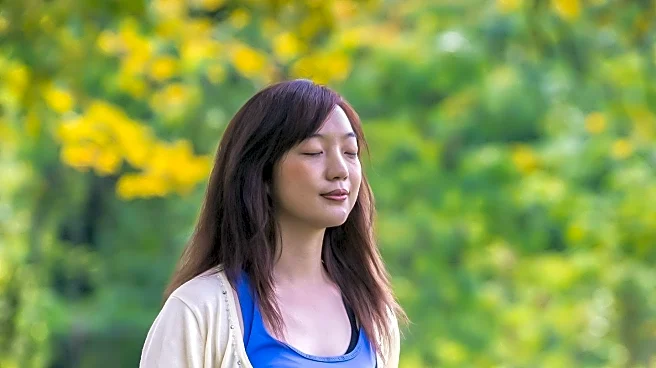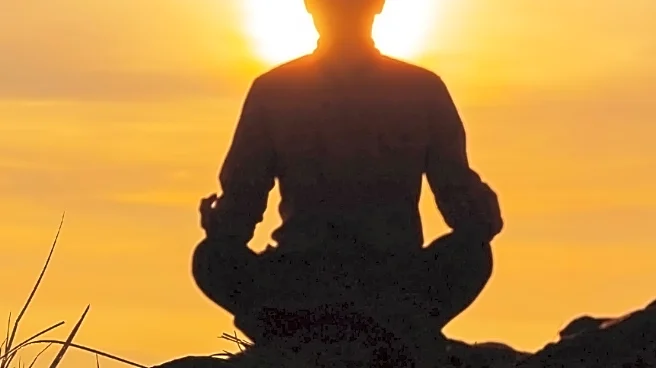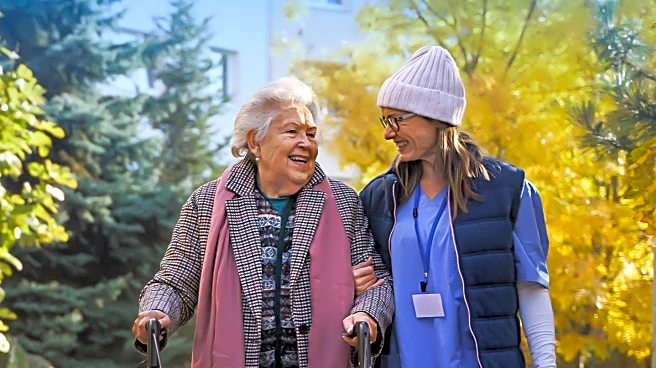What's Happening?
A study led by Michelle Hand, a social worker and holistic therapy researcher at George Mason University, has explored the therapeutic benefits of combining music with nature. The research suggests that
programs integrating these elements can significantly reduce anxiety, improve mood, and enhance overall well-being. The study reviewed 884 articles, identifying eight that specifically blended music and nature therapy. These programs included outdoor singing, rhythmic garden activities, and animal-assisted sessions with live music. Participants across various demographics, including older adults and trauma survivors, reported feeling calmer and experiencing better sleep and reduced stress after engaging in these sessions.
Why It's Important?
The findings highlight a promising, low-cost approach to mental health care that could benefit diverse groups, including those with disabilities and individuals seeking non-pharmaceutical stress management options. By offering a sense of control and choice, these programs foster a supportive environment that encourages continued participation. The potential for widespread application in community settings, such as schools and elder care facilities, suggests that music and nature therapy could become a valuable tool in public health strategies. The research underscores the need for larger trials and objective measures to further validate these benefits.
What's Next?
Future research is needed to expand the evidence base, including larger trials and comparisons between music-only, nature-only, and combined therapies. Tracking long-term benefits and incorporating objective measures like heart-rate variability and stress hormone levels could strengthen the case for integrating these therapies into mainstream mental health practices. Community partnerships with libraries, parks, and housing providers could facilitate access to green spaces, ensuring broader implementation of these therapeutic programs.
Beyond the Headlines
The study reframes the popular 'touch grass' meme as a practical mental health strategy, emphasizing the importance of sensory engagement and personal choice in therapeutic settings. By transforming these sessions into community rituals rather than clinical appointments, the approach fosters social connections and enhances accessibility, particularly in underserved areas.











